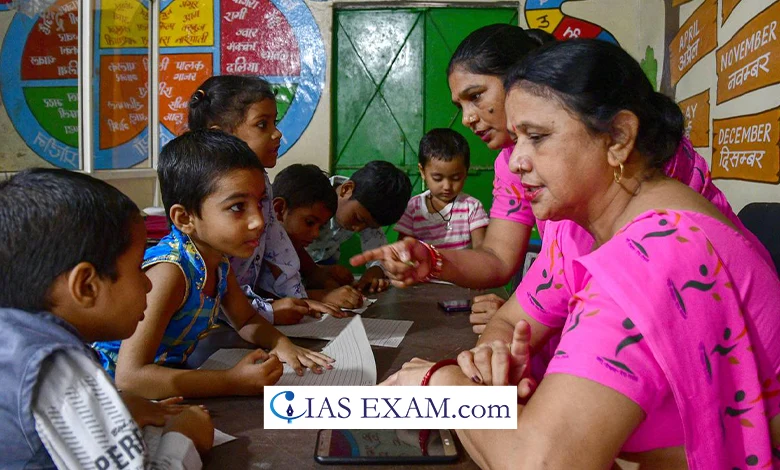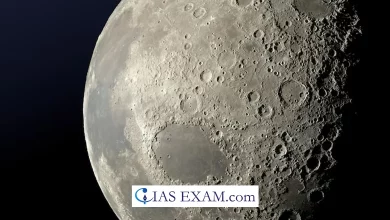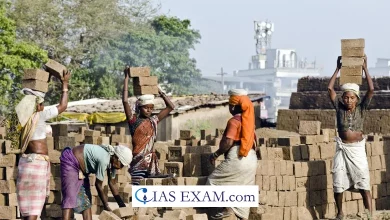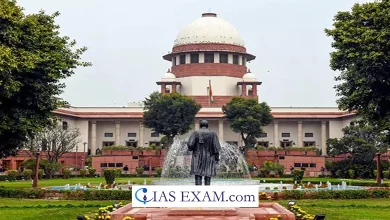Daily Current Affairs for UPSC
National Curriculum for Early Childhood Care and Education 2024
Syllabus- Education [GS Paper-2]

Context
The Ministry of Women and Child Development (MWCD) has recently released the National Curriculum for Early Childhood Care and Education 2024 titled ‘Aadharshila,’ on the lines of the National Education Policy 2020 and the National Curriculum Framework.
Key Highlights
- For the first time ever, the Union Government has released a curriculum advisable to be taught to children aged 3 to 6-years-old.
- It has given an impetus to pre-school learning in 14 lakh anganwadis throughout the country.
- The early formative years schooling curriculum is anticipated to bridge foundational literacy and numeracy gaps which may also rise up in later school years.
- As 85% of brain development takes place earlier than the age of six years, the Ministry recognizes the pivotal function of early years in development and seeks to bolster India’s Early Childhood Care and Education (ECCE) landscape.
National Curriculum for ECCE 2024
- It covers all domains of development such as physical/motor, cognitive, language and literacy, socioemotional, cultural/aesthetic as well as positive habits.
- The Curriculum is established to offer a weekly calendar comprising 36 weeks of active gaining knowledge of, 8 weeks of reinforcement and four weeks of initiation, collectively with 5+1 days of play- based learning in one week, and 3 blocks of activities in one day.
- It presents a mixture of sports, consisting of in-centre and at-home, indoor and outdoor, child-led and educator-led etc.
- Robust evaluation gear are supplied for monitoring progress, tailoring learning, and celebrating every child’s unique journey.
- Special focus has been given for the screening, inclusion and referrals of Divyang children in every activity.
National Framework for Early Childhood Stimulation 2024
- It is for the children from delivery to a few years and is designed to offer the Anganwadi Worker with a basic understanding of how children grow and develop, the significance of brain development and the need for nurturing care.
- It fills conceptual and sensible gaps in the information of care and stimulation, based on the Nurturing Care Framework.
- 36 month-wise age-based activities are furnished that can be performed both within the family as well as on the Anganwadi Centre or Creche, through all.
- The files have been organized through the National Institute for Public Cooperation and Child Development (NIPCCD).
- NIPCCD will lead the schooling of Anganwadi functionaries on the new Curriculum and Framework.
National Education Policy 2020
- The NEP 2020 is the primary education policy of the 21st century and replaces the 34 year old National Policy on Education (NPE), 1986.
- The NEP 2020 is founded on the five guiding pillars of Access, Equity, Quality, Affordability and Accountability.
- This coverage envisages that the extant 10+2 structure in school education will be modified with a new pedagogical and curricular restructuring of 5+3+3+4 covering ages 3-18.
- Aims to: Increase public investment in schooling, Strengthen the use of technology and Increase attention on vocational and adult education, among others.
- Curricular Reforms: The NEP emphasizes reducing the curriculum content material to crucial middle principles, skills, and talents, taking into account a higher holistic and included method to getting to know.
- It encourages the mixing of vocational training, arts, and sports into the mainstream curriculum.
- Multilingualism and Mother Tongue based Education: The coverage promotes multilingualism and encourages the usage of the mother tongue or regional language as the medium of education up to at least Grade 5, whilst also ensuring proficiency in the official languages of India and English.
Source: The Hindu
UPSC Mains Practice Question
Q. The International Monetary Fund (IMF) recently released its Global Financial Stability Report, highlighting various risks and challenges facing the global financial system. Discuss the key findings of the report and analyse their implications for global economic stability and policy responses.





.png)



